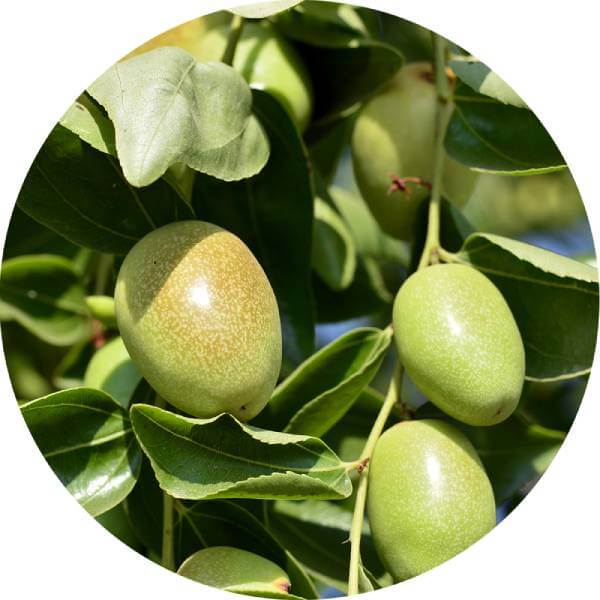Jojoba
(Simmondsia chinensis)
The Indians who inhabited the semi-deserts of Arizona, Baja California and Mexico have used it for centuries, and passed on knowledge about it from generation to generation. It has always helped them to protect their skin against strong sun exposure, to heal wounds and soothe pain in muscles and bones, but also to soften animal skin during tanning. Newly-arrived white settlers did not show much interest in this strange fruit until a ban on whaling and whale fat trade was introduced in 1971. That was the time that witnessed the beginning of a search for something that has a similar composition and use – jojoba.
The plant’s name originates from Uto-Aztekan roots, from hohowai – whose proper pronunciation is “hohoba”. Its scientific name Simmondisa chinensis is a bit absurd, because the second word in its name means Chinese, although it does not originate from China. This was an accident – the German botanist Johan Link misread the label “Caliph” on the label, which referred to California, as “China.” How did jojoba manage to replace whale fat? That was thanks to its unique composition. Jojoba seed does not contain triglycerides, like other plant oils, but it contains wax. Apart from being similar to whale fat it is thought that it has a very similar composition to human sebum.
Jojoba’s liquid wax is thermally stable, it does not oxidate and will not go rancid, it can be heated to over 200 degrees and frozen at minus 10, without any problem. The plant itself is very resistant and simple to look after as it can withstand cruel desert conditions. That is why jojoba plantations today are run as profitable businesses, which was foretold all those centuries ago when the Indians named it “liquid gold”.

